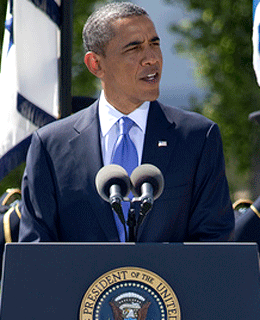Job impact: Rough rule of thumb
President Obama is scheduled to propose a set of job-creation proposals before a joint session of Congress on Thursday. Details have yet to be released, but it looks like the package will include a continuation of some policies — such as the expanded unemployment insurance benefits, and the payroll tax holiday — and some new initiatives such as school construction and expanded investments in infrastructure.
Given that unemployment remains over 9% with 14 million people unemployed, it’s important to ask whether the job package is large enough to be meaningful. It’s also important to make sure that funds go to initiatives that are cost-effective at creating jobs quickly, while also providing economic value over the long run.
Here’s how to think about the job impact. The continuation of temporary or expiring job policies will make sure that we don’t backslide, but won’t be a new source of net job creation. For example, the payroll tax holiday and the extended unemployment insurance have already created jobs (and will continue to do so), and failing to continue these policies (or to replace them with something as effective) will lead to 1.5 million fewer jobs.
 New initiatives, by contrast could lead to substantial new job creation if they are funded at an appropriate scale. For example, what would be the cost of spurring the creation of one million new jobs economy-wide? If you look at the impact of something like boosting spending on infrastructure (roads, bridges, etc.) each dollar spent yields an estimated $1.44 in increased GDP–which is pretty good on the bang-for-the-buck scale. If you track through the impact on employment (you need more people to make more stuff!) – it looks like each 1 percentage point increase in GDP leads to about 1.2 million new jobs. So, doing the quick math, you would need about $88 billion in additional investments to get an increase in employment of one million jobs. Conversely, investments totaling $100 billion would get you an increase of about 1.1 million jobs.
New initiatives, by contrast could lead to substantial new job creation if they are funded at an appropriate scale. For example, what would be the cost of spurring the creation of one million new jobs economy-wide? If you look at the impact of something like boosting spending on infrastructure (roads, bridges, etc.) each dollar spent yields an estimated $1.44 in increased GDP–which is pretty good on the bang-for-the-buck scale. If you track through the impact on employment (you need more people to make more stuff!) – it looks like each 1 percentage point increase in GDP leads to about 1.2 million new jobs. So, doing the quick math, you would need about $88 billion in additional investments to get an increase in employment of one million jobs. Conversely, investments totaling $100 billion would get you an increase of about 1.1 million jobs.
The president’s initiatives will likely include some ideas that have a larger bang for the buck, as well as some that may have lower impacts, but the 1.1 million jobs per $100 billion is a fairly good way to quickly assess the overall job impact of public investments.
Enjoyed this post?
Sign up for EPI's newsletter so you never miss our research and insights on ways to make the economy work better for everyone.